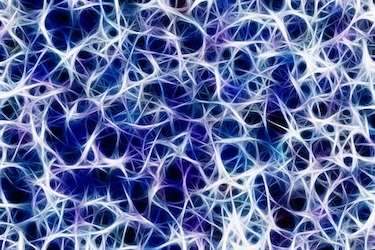For much of our existence, the brain and its inner workings were a mystery to humanity. Early scientists, philosophers, and psychologists theorised on the complexities of the human brain, but due to the lack of concrete evidence, they often came to highly inaccurate conclusions. Thanks to modern science, there is now extensive research on the brain and its functions, giving us unrestricted access to this once misunderstood concept.
So, what IS the brain exactly?
The brain can be simply defined as the control centre of the body. As part of our central nervous system, the brain is a soft mass of supporting tissues and nerves, which regulate our senses, personality and bodily functions. However, to truly understand the human brain, we must look deeper to learn how the brain works. The brain can be separated into different components, each responsible for specific functions.
The Brainstem
The brainstem is positioned at the bottom of the brain and is the section that attaches to the spinal cord, carrying signals between the body and the cerebral cortex. It can be segregated into three structures:
- The midbrain plays a key role in motor movement, particularly eye motion, as well as auditory and visual processing.
- The pons contains four cranial nerves that help coordinate facial movements, facial sensation, hearing and balance.
- The medulla oblongata regulates breathing, heart rhythms and swallowing.
As a whole, the brainstem encompasses many primitive functions that are essential to our survival, meaning damage to this region of the brain can cause 'brain death'. It also contains the reticular activating system which is responsible for wakefulness and attention.
The Cerebellum
The cerebellum is located at the rear of the brain. Its various responsibilities can be divided into three sections by function:
- The cerebrocerebellum is formed by the lateral hemispheres. It primarily functions in planning movement and motor learning. Muscle activation and coordination are also regulated here.
- The spinocerebellum is made up of the vermis and the intermediate zone of the cerebellar hemispheres. This regulates bodily movements through error correction.
- The vestibulocerebellum is involved in ocular reflexes and balance. It receives signals from the vestibular system and sends them out to the vestibular nuclei.
Overall, the cerebellum helps fine-tune motor activity and movements and allows the body to perform rapid, repetitive actions.
The Cerebrum
The cerebrum is divided into the right and left cerebral hemispheres and forms the largest portion of the brain. The neurons and Glia found in the surface of the cerebrum form the cerebral cortex. Visually, it is a greyish colour and the sulci (small grooves) and fissures (large grooves) make the brain appear wrinkled.
There is a groove down the centre of the brain called 'the great longitudinal fissure' which separates the two hemispheres. The corpus callosum connects the two halves at the bottom and delivers messages between the two. Touching one side of the brain sends signals to the opposite side of the body, meaning that the left hemisphere controls the right side of the body and vice versa.
The cerebrum can be divided into pairs of 'lobes', which are essentially broad regions of the brain. Each hemisphere contains a frontal, temporal, parietal and occipital lobe, which function collaboratively by communicating with one another through electrical signals.
The Lobes
Each pair of lobes serves a different purpose or function.
- The frontal lobes are the most prevalent and are responsible for various motor skills such as voluntary movement, speech, intellectual and behavioural functions. It encompasses the prefrontal cortex which is involved in memory, intellect, personality, the premotor cortex which controls orientation and the Broca's area which contributes to language production
- The temporal lobes are divided into two sections, one at the side of each hemisphere (lateral) and one at the bottom (ventral). The area on the right side aids visual memory and facial recognition and the area on the left aids verbal memory. The rear of the lobe allows humans to interpret emotion.
- The parietal lobes receive and interpret information received from other areas of the brain. New sensory information combined with memory allows the brain to give meaning to objects.
- The occipital lobes are responsible for the processing of visual information. They control the interpretation of different colours and shapes.
The Glands
The brain contains two major glands:
- The pineal gland is stimulated by darkness and light and produces melatonin, which helps modulate sleep patterns. It also has some sort of role in sexual role maturation, but its exact function is unclear.
- The pituitary gland regulates the secretion of hormones and is responsible for growth, as well as various organ and bodily gland functionality.
The Thalamus and The Hypothalamus
The thalamus is a small section of the brain located just above the brain stem. It essentially acts as the relay station for all information going to and from the cortex. It is also functionally connected to the hippocampus, as its role in spatial memory and spatial sensory are essential in episodic event memory.
One distinct section of the thalamus is the hypothalamus. This small structure is located near the pituitary gland and sends messages to it. As the pituitary gland controls the body's hormonal secretion, the hypothalamus plays a role in:
- Temperature control
- Daily physiological cycle
- Appetite
- Sexual behaviour
- Emotional regulation
The Human Brain
The combination of all these components creates the intricate mechanism that is the human brain. Although understandings of the brain have improved drastically in recent times, there are undoubtedly mysteries yet to be uncovered. Even with all we now know, research into the brain and its functionality are being carried out persistently with no sign of stopping any time soon. After all, a better understanding of our brains is ultimately a better understanding of ourselves.
Did You Know?
The human brain is thought to have an unlimited capacity. According to the latest research, our brains contain up to 86 billion neurons, and these neurons form connections with one another. It is estimated that the number of connections made could reach a mind-blowing 1 quadrillion. The combination of neurons over time increases storage capacity to a potentially unlimited level.
There are 100,000 neurons and 1 billion synapses in a segment of brain the size of a grain of sand. This is why the brain is so fragile and how seemingly small amounts of damage can have a huge impact. When a person has a stroke or suffers from Parkinson's disease, brain cells die, destroying large quantities of neurons and synapses. The result is that the brain's ability to communicate with the body is significantly impaired.













